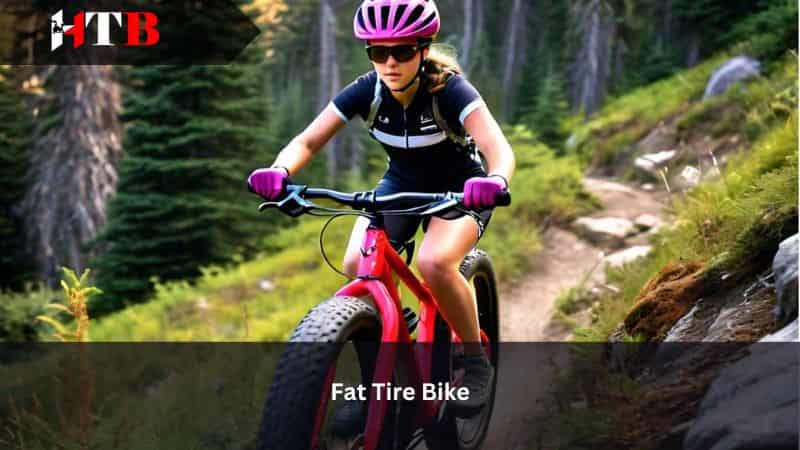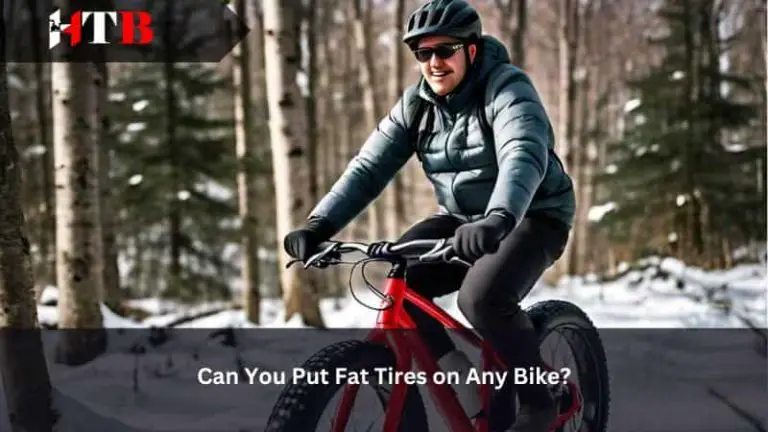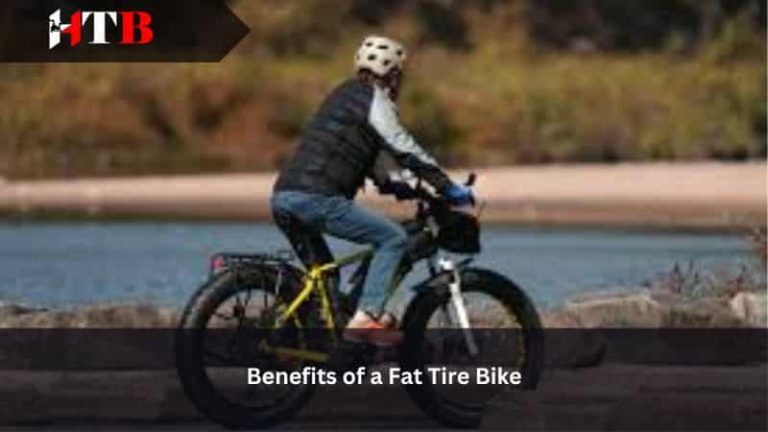Are Fat Tire Bikes Harder to Pedal? Myths & Facts Explained
Picture yourself gliding through rugged terrains, conquering steep hills and sandy beaches with ease. Now, imagine doing all that on a fat tire bike – the behemoth of the cycling world, with its oversized wheels ready to tackle any obstacle in its path. But wait, are these hulking machines as effortless to pedal as they seem, or is there more than meets the eye? In this article, we delve into the age-old debate: Are Fat Tire Bikes Harder to Pedal?
Separating myths from facts, we explore the science behind these robust bikes and uncover the truth behind their pedal-pushing prowess. Strap in as we unravel the mysteries surrounding fat tire bikes and discover whether they truly live up to their reputation of being a challenge on two wheels.
What is a Fat Tire Bike?
Fat tire bikes, also known as fat bikes, are characterized by their oversized tires that range from 3.8 to 5+ inches wide. These wide tires provide unmatched stability and grip, making fat tire bikes ideal for a variety of terrains like snow, sand, mud, and rocky trails. Contrary to traditional bicycles with narrow tires, fat tire bikes excel in maintaining traction over challenging surfaces due to the larger contact patch between the tire and ground. This unique design feature allows riders to confidently navigate through rough terrains that would typically be difficult for standard bikes.
The benefits of fat tire bikes extend beyond just conquering extreme conditions. While they are indeed popular among adventurers seeking thrills in rugged environments, the enhanced stability and comfort provided by fat tire bikes make them perfect for leisurely rides on softer terrains like beaches or gravel paths. Imagine gliding effortlessly along a sandy beach where thinner tires would sink in – this is where the magic of fat tire bikes truly shines. The misconception that these bikes are exclusively for extreme conditions overlooks their versatility and adaptability to various riding scenarios.
It’s crucial to understand that fat tire bikes are not solely reserved for adrenaline junkies tackling mountain descents or icy landscapes; they cater to a wide spectrum of riders looking to explore diverse environments comfortably. From casual riders wanting smoother rides on bumpy roads to off-road enthusiasts craving new adventures, fat tire bikes offer a blend of performance and comfort suitable for all types of cycling experiences. By dispelling the notion that fat tire bikes are only meant for extreme conditions, more people can appreciate the unique advantages these robust machines bring to any cycling journey.
Are Fat Tire Bikes Harder to Pedal?
In a very short answer: No, it is not!
One of the common misconceptions surrounding fat tire bikes is that they are inherently harder to pedal than traditional bicycles. However, this belief may not hold true when we delve deeper into the mechanics and factors affecting pedaling efficiency. Debunking this myth requires understanding that while fat tire bikes have distinct characteristics, such as wider tires designed for various terrains, it does not necessarily translate to increased pedaling difficulty. In fact, with proper adjustments and techniques, pedaling on a fat tire bike can be just as efficient as on a standard bike.
Exploring how proper gearing and tire pressure play crucial roles in enhancing the efficiency of pedaling on fat tire bikes sheds light on this misconception. By ensuring that the gears are appropriately set for the terrain and adjusting the tire pressure according to the riding conditions, cyclists can optimize their pedaling experience on fat tire bikes. It’s essential to recognize that these adjustments are key factors in making the ride smoother and more enjoyable, debunking the notion that fat tire bikes require excessive effort to pedal.
Clarifying any assumptions about fat tire bikes being significantly harder to pedal than traditional bicycles is vital in dispelling this myth. While there may be differences in technique and adjustment required when switching from a standard bike to a fat tire model, it’s important to emphasize that these differences do not necessarily equate to increased difficulty. By understanding how gearing, tire pressure, and riding techniques can influence pedaling efficiency on fat tire bikes, cyclists can navigate various terrains with confidence while enjoying the benefits of stability and comfort provided by these unique bicycles.
Factors Affecting Pedaling Effort on Fat Tire Bikes
When it comes to the effort required to pedal a fat tire bike, various factors play a crucial role in determining the overall experience:
- Terrain
- Rider’s experience
- Fitness level
One key factor is the terrain where you ride. Different surfaces, such as snow, sand, or mud, can impact how easy or challenging it is to pedal a fat tire bike. For instance, riding on soft sand may necessitate more pedaling effort compared to smoother terrain due to increased resistance. Understanding how terrain influences pedaling can help riders prepare and adjust their approach accordingly.
Another significant aspect that impacts pedaling effort on fat tire bikes is the rider’s experience and fitness level. Seasoned cyclists might find it easier to adapt to the unique characteristics of fat tire bikes and optimize their pedaling efficiency. Similarly, individuals with higher fitness levels may handle the potential challenges of fat tire biking more effectively than beginners, showcasing how personal factors contribute to the overall cycling experience.
Additionally, factors inherent to the bike itself can affect how hard or easy it is to pedal a fat tire bike. Considerations like bike weight, gear ratio selection, and individual strength all play roles in determining pedaling difficulty. A lighter fat tire bike might feel less strenuous to pedal over long distances compared to a heavier model. Moreover, choosing appropriate gear ratios based on the terrain can significantly influence how smoothly one can pedal a fat tire bike, emphasizing the importance of customization for an optimal riding experience tailored to individual needs. By understanding and addressing these factors, cyclists can enhance their comfort and performance while riding fat tire bikes.
Tips for Optimal Pedaling Performance on Fat Tire Bikes
To enhance your pedaling performance on fat tire bikes, one crucial aspect to consider is adjusting tire pressure based on the terrain you plan to ride on. Lower tire pressures provide better traction and shock absorption, making it easier to pedal over rough or soft surfaces like sand or snow. Conversely, higher tire pressures are ideal for smoother terrains as they reduce rolling resistance, aiding in maintaining speed with less effort.
When it comes to choosing the right gear ratios for various terrains, understanding how gearing impacts your pedaling efficiency is key. For uphill climbs or challenging trails, lower gear ratios make it easier to pedal by providing more torque at the expense of speed. In contrast, higher gear ratios are suitable for flat surfaces or downhill stretches where maintaining momentum is essential. Adjusting gears accordingly can significantly improve your overall riding experience on a fat tire bike.
Regular maintenance practices play a vital role in ensuring optimal pedaling performance on fat tire bikes. Simple tasks like lubricating the chain regularly not only reduce friction but also prolong the lifespan of drivetrain components, contributing to smoother pedaling. Additionally, conducting routine brake checks helps maintain braking efficiency and safety while riding. By staying proactive with maintenance routines, you can enjoy consistent and efficient pedaling experiences on your fat tire bike.
Closing Thoughts
In conclusion, the prevailing myth that fat tire bikes are inherently harder to pedal has been effectively debunked through a thorough exploration of the factors at play. By understanding the characteristics of fat tire bikes, optimizing gear ratios and tire pressure, and considering individual fitness levels and riding techniques, cyclists can enjoy efficient and enjoyable pedaling experiences on these versatile bicycles. It is essential to emphasize that while differences exist in comparison to traditional bikes, proper knowledge and adjustments can make fat tire biking accessible and rewarding for riders of all skill levels.
By shedding light on the misconceptions surrounding fat tire bikes and their perceived difficulty in pedaling, this article seeks to empower cyclists, fitness enthusiasts, and outdoor adventurers with accurate information. With the right approach to equipment maintenance, terrain navigation, and personal training, riders can truly appreciate the unique benefits that fat tire bikes offer without succumbing to unfounded beliefs about their supposed pedal prowess. Ultimately, by debunking myths and promoting understanding, we celebrate the joy and versatility that come with embracing new styles of cycling.
Related Articles:




